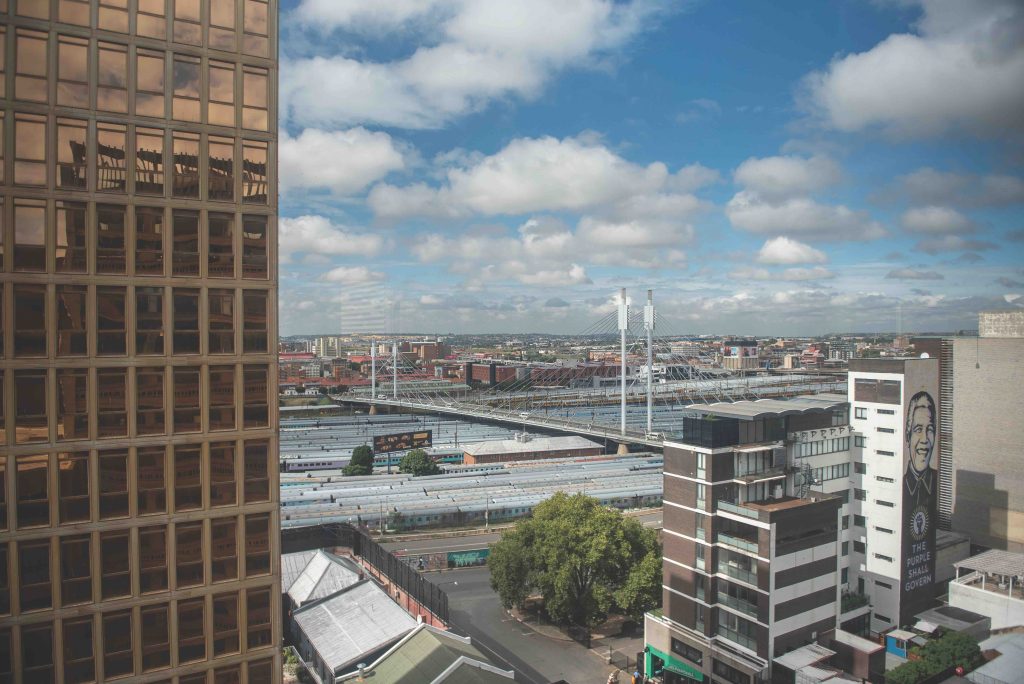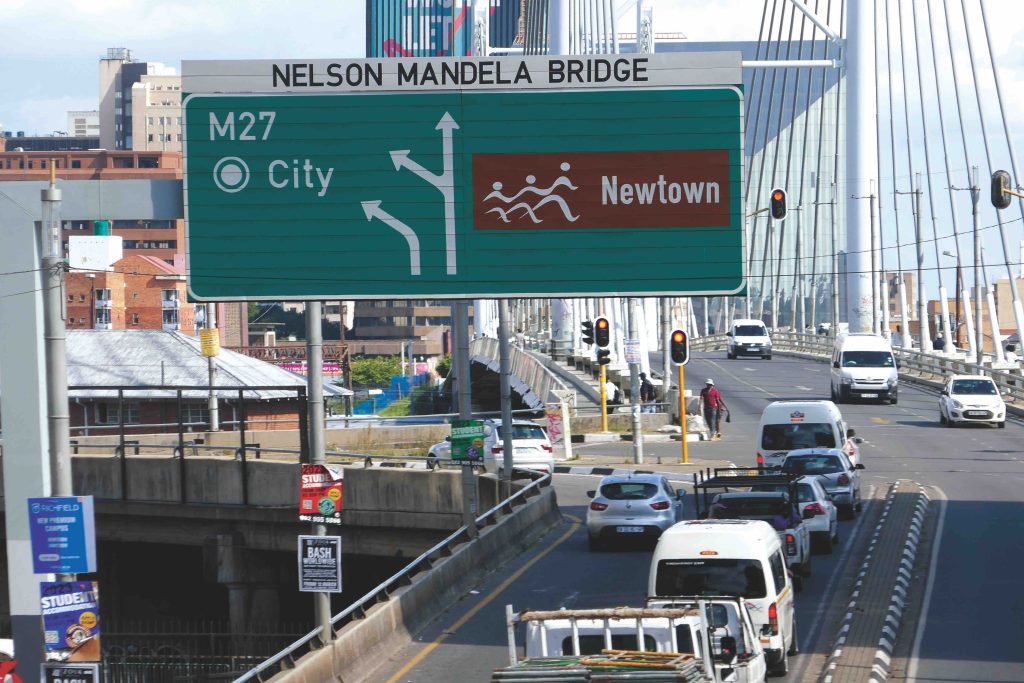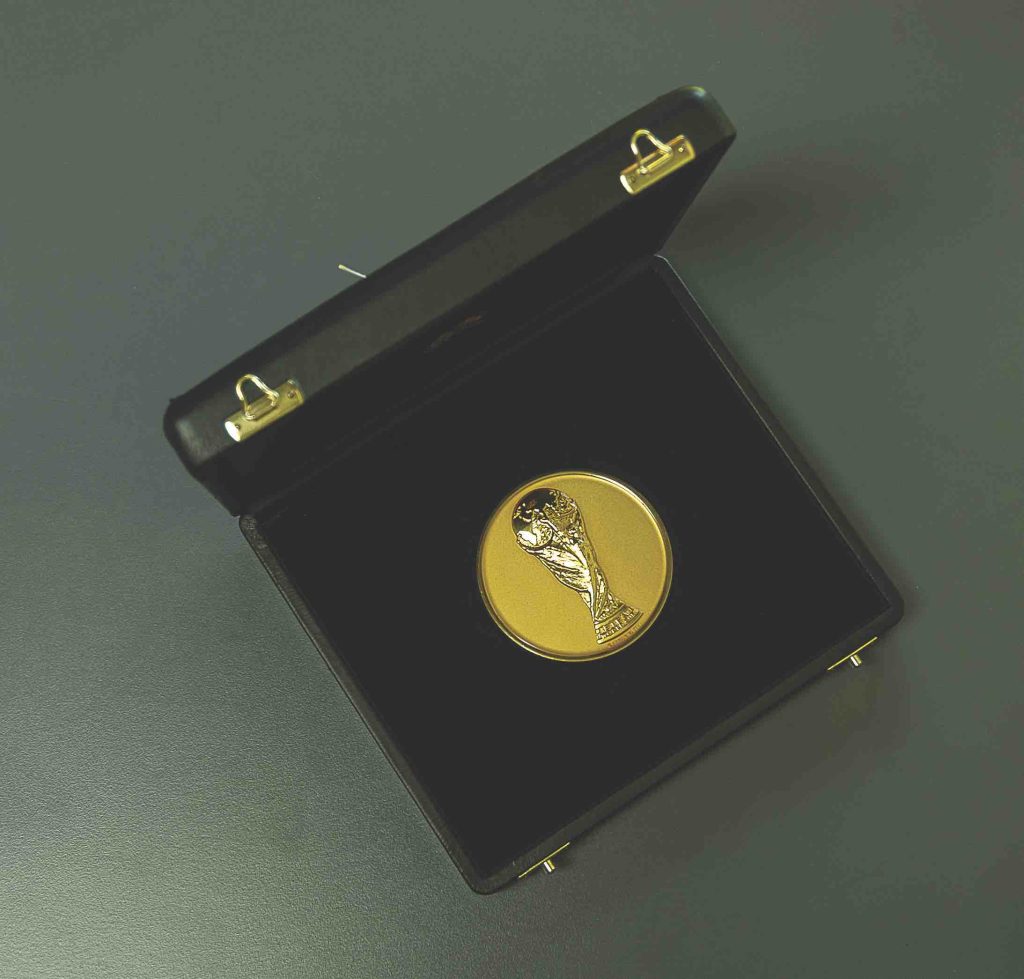Braamfontein, Johannesburg, Gauteng, South Africa. GPS 26°11’48.5”S 28°02’03.2”E

+ + +
The Nelson Mandela Bridge, inaugurated by Nelson Mandela on 20 July 2003, serves as a vital artery in Johannesburg, connecting the bustling business areas of Braamfontein and Newtown.1 This bridge is a significant infrastructural element and a symbolic structure reflecting Mandela’s legacy in bridging the socio-political divide in South Africa by linking the old and new as it guides traffic into the heart of the rejuvenated Johannesburg downtown.2 It is also a sign of urban transformation in Johannesburg, highlighting its place in the city’s evolving identity.3 Furthermore, we observed that the bridge is part of the iconic Johannesburg skyline featured in the interior of the South African Tourism office at Nelson Mandela Square in Sandton.
I have taken a rest here for a moment to steal a view of the glorious vista that surrounds me, to look back where I came. But I can only rest for a moment because with freedom comes responsibilities. I dare not linger, for the road to freedom is not yet ended.
Nelson Mandela4
The Nelson Mandela Bridge is an engineering marvel standing as the largest cable-stylised bridge in Southern Africa. It was constructed to facilitate movement between two historically and culturally significant districts.5 It won an award for outstanding civil engineering achievement by the South African Institute of Civil Engineers.6 The bridge provides pedestrian walkways alongside vehicular traffic lanes which facilitates the passage of approximately 3 000 vehicles per hour to ensure accessibility and safety for all users.7 The construction presented operational and logistical challenges due to crossing 42 railway lines without disrupting traffic.8 This iconic landmark utilised vast materials, including 4,000 cubic meters of concrete and 1,500 tons of steel, to ensure its lightweight yet stable design.9 The lighting on the bridge was upgraded ahead of the FIFA 2010 World Cup hosted in South Africa as a tribute to Mandela’s enduring influence on South Africa’s journey towards democracy and unity through its rainbow-coloured lights that lit up the Johannesburg skies.10
The academic discourse around the Nelson Mandela Bridge extends to its impact on community perception and identity, as evidenced during an informal workshop in 2023 involving three graduates from the Market Photo Workshop in Newtown, Johannesburg. Their engagement with the bridge through a photographic exploration unveiled the multifaceted narratives around this landmark, oscillating between its historical resonance and contemporary challenges, including safety concerns. The bridge serves as a mere passage from Braamfontein to Newtown for these students. They paid little attention to its historical significance in the few seconds they spend crossing the bridge. However, a shift occurred when these individuals were introduced to graphic heritage and the importance of places named after Nelson Mandela.
The photographic documentation of the bridge unveiled a neglected environment with a trail of informal messages, scattered trash, and broken glass. The only formal indication of the bridge’s name is a road sign from Bertha Street just before crossing the structure. One of the workshop participants highlighted the need for signage explaining why the bridge bears Nelson Mandela’s name since the historical value may only be apparent to some. The rainbow-lit bridge that is advocated on many tourist websites and image searches are outdated since these colourful lights have not worked for more than a decade. The City of Johannesburg acknowledged the need for tighter security measures and structural repairs due to traffic accidents and vandals that stole the electricity cables and damaged metal elements on the bridge only a mere year after the World Cup.11 Unfortunately, the lights were never replaced to counter future vandalism.12

These insights prompt us to ask whether the bridge, bearing the name of a respected leader, can still serve as a powerful reminder of the nation’s journey toward unity. In the years since Mandela’s inauguration, the bridge’s symbolic weight may have faded for some. Still, the hope is that those engaged in projects like this will become ambassadors, educating others on the ongoing significance of the Nelson Mandela Bridge.
+ + +
From the Archive at the Centre of Memory (ACoM)
Item code: ZA COM NMG-470
Title: 2010 FIFA World Cup Medal. Description: A gold plated 2010 FIFA World Cup Medal with an image of the world cup carved into its surface.
Inscribed: Nelson Mandela Winner of the 2010 FIFA World Cup for Africa.
Size: 4cm x 16cm x 18cm
Medium: Gold Meta

Other items related to the Nelson Mandela Bridge in ACoM
1) ZA COM MR-S-1503: Nelson Mandela’s speech at the opening of the Nelson Mandela Bridge.
2) ZA COM MR-T-4-5-1609: Nelson Mandela Bridge in Braamfontein, Johannesburg.
+ + +
Acknowledgements
We extend our heartfelt thanks to the graduates of the Market Photo Workshop, Matsediso Dichaba, Khaya Malinga, and Tsepiso Mahooe, for their engagement in the informal workshop alongside our research team, led by Alet Pretorius. We’re also grateful to ‘The Playground’ who provided us access to their building to capture an aerial view of the bridge.
References
1. Road Traffic Technology (n.d.). Nelson Mandela Bridge, Johannesburg, South Africa – Verdict Traffic.
https://www.roadtraffic-technology.com/projects/nelsonmandelabridge/
[Accessed 15 February 2024].
2. South African Tourism (2024). The Nelson Mandela Bridge, Johannesburg: A tribute to an icon.
https://www.southafrica.net/gl/en/travel/article/the-nelson-mandela-bridge-johannesburg-tribute-to-an-icon [Accessed 15 February 2024].
3. Mfaniseni, S. (2021). The Nelson Mandela Bridge as a Great Sign of Urban Transformation in Johannesburg, South Africa. Urban Forum, 32. https://doi.org/10.1007/s12132-021-09422-y [Accessed: 15 February 2024].
4. Mandela, N. (2003). Opening Speech. https://archive.nelsonmandela.org/index.php/za-com-mr-s-1503 [Accessed 15 February 2024].
5. South African Tourism (n.d.).
6. City of Johannesburg (2011). Repairs for Mandela Bridge. https://joburg.org.za/media_/Newsroom/Pages/2013%20articles/2011%20&%202012%20%20Articles/Repairs-for-Mandela-Bridge.aspx
[Accessed 15 February 2024].
7. Road Traffic Technology (n.d.).
8. Road Traffic Technology (n.d.).
9. Road Traffic Technology (n.d.).
10. South African History Online (n.d.). Nelson Mandela Bridge, Johannesburg.
https://www.sahistory.org.za/place/nelson-mandela-bridge-Johannesburg
[Accessed 15 February 2024].
11. City of Johannesburg (2011).
12. City of Johannesburg (2011).
Photography © 2023 Robert Harland, Alet Pretorius, Matsediso Dichaba, Khaya Malinga and Tsepiso Mahooe
